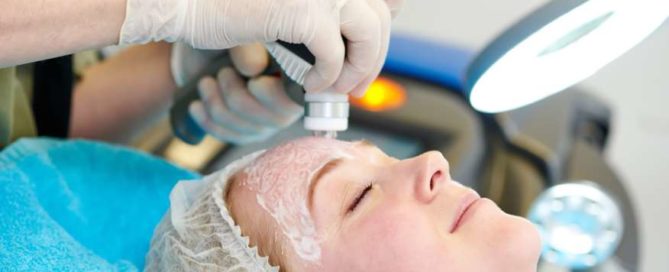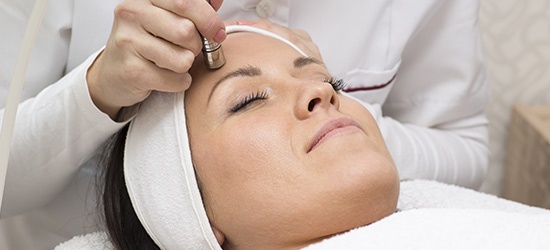With Valentine's Day rapidly approaching, more people are turning to laser skin resurfacing treatments to look their best. It has become a popular way to love your skin, and is the best aspect to looking good with smooth, youthful skin. For men and women who are noticing the effects of aging, having a facelift is an option that is expensive, painful, and time consuming. There is also the recovery period that can take several weeks. Creams and oils can also help in some cases. But, for those with more noticeable problems, creams or oils won't help tighten the skin like laser skin resurfacing can.
For many, the cost and inconvenience of a face lift or plastic surgery is prohibitive. A simpler alternative for tighter, younger looking skin, is laser skin resurfacing. Read on for more information about this process and the benefits of laser skin resurfacing.
What is laser skin resurfacing?
A laser is used to target areas of wrinkled or aged skin. It can also be used to remove acne, scars, and blemishes. The laser is used by concentrating short bursts on the affected areas. The process is used to remove the affected skin layer by layer. The end result of a laser skin resurfacing treatment, is new skin that is younger looking and tighter, without the pitting, ridges, or roughness of blemishes and wrinkles.
Laser skin resurfacing is sometimes referred to as laser peel, or laser vaporization. It is not used for those with existing acne or those who have dark skin. It is also not a good solution for stretch marks. People with fine lines around the eyes and lips are often good candidates for the procedure. It’s best to consult with your treatment specialist to learn if laser skin resurfacing is an option for you.
Laser treatments for problem areas of the skin can be done on the face, neck, and chest. Treatments are less painful and require less recovery time than surgical procedures.
What are the benefits of treatments?
Laser skin resurfacing can target only problem areas. The surrounding areas are not likely to be affected by targeted treatments. This means a person agreeing to this type of skin treatment can keep areas of younger looking or unscarred skin.
There are also fewer side effects of laser treatment, than with surgical intervention. There is little swelling, redness, or bruising. For someone who wants to get back to normal daily activities in public, laser skin resurfacing treatment may be the best option. The recovery time is about a week or less. This is much faster than recovery from surgical interventions, like plastic surgery.
Laser treatment encourages new skin growth. By peeling away old skin cells on the first few layers, new skin cells regenerate quickly and become soft, supple, yet tight areas on the affected areas.
Laser skin resurfacing requires no overnight hospital stay. This makes it a convenient choice for those who want specific areas treated or who have relatively minor skin issues they want to address. There is no need to take time off work or rearrange one's life, to take advantage of this treatment. One of the largest benefits is that the cost is very affordable.
How do I seek this treatment and what should I expect?
Finding a good skin specialist who has done thousands of procedures can be challenging. However, getting recommendations from friends, family, or co-workers who have received this type of treatment, is an easy way to start. Make sure the specialist is also board certified and able to properly explain the entire process. Any questions about the procedure, preparations, or what to expect, should be directed to the skin specialist performing the treatment procedures.
Though it is not major surgery, laser skin resurfacing does require advanced preparation. Stopping medications that can increase bleeding, like aspirin or ibuprofen, will be required at least a week prior to the scheduled treatment. While the healing time from this procedure is much shorter, there are several precautions the skin specialist will work to prevent. Skin infection can occur when new or tender skin is exposed. The physician performing the treatment will likely prescribe antibiotics, to prevent infection. You will also be required to wear a bandage, to keep the new skin clean and free of contaminants.
The type of anesthesia used will depend on the size of the area to be treated. For smaller areas, only a local anesthetic will be used to numb the area. For larger areas, with more invasive treatment, such as the entire face, general anesthesia will likely be used. About a day after the procedure, most people will need to apply some type of ointment to the affected areas, to prevent scabbing and encourage development of new skin cells.
There may be a small amount of swelling after laser skin treatments. If swelling occurs, the physician may prescribe a low dose of steroids. Otherwise, the affected areas are treated similar to surgical scars.
Caring for skin during Houston winters…
Houston winters can be tough on skin; especially when the temperatures and winds fluctuate day by day. Even younger skin can experience redness or irritation from cold winds. Skin also tends to dry and crack during colder months, regardless of whether you are in Houston or Minneapolis. Staying hydrated in the winter is the first line of defense against dry skin. By drinking plenty of water, helps skin look more supple and smooth. Water also aids the body in removing toxins, which can affect the look and feel of skin.
Deep moisturizers that also provide nutrients are the best remedies for dry winter skin. Start moisturizing long before winter begins, to achieve the best results. If you want to look your best on Valentine's Day this year, start hydrating your skin days or weeks in advance, and if you need do to something dramatic, consider laser treatment.
Avoiding hot baths is another way to reduce the incidence of dry skin and redness. It is not helpful to apply moisturizers right after a bath. Instead, they should be applied routinely at least twice a day, to keep skin smooth and looking its best. Love your skin by calling us today.




